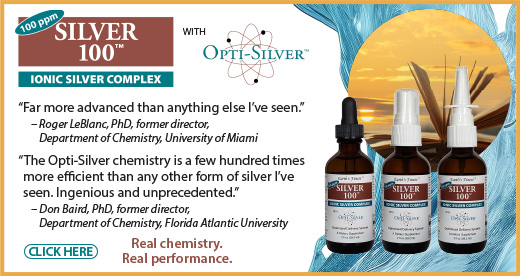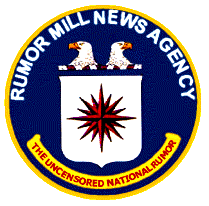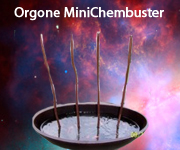IG Farben
https://en.wikipedia.org/wiki/IG_Farben
IG Farben was a German chemical and pharmaceutical industry conglomerate. Its name is taken from Interessen-Gemeinschaft Farbenindustrie AktienGesellschaft (Plc Syndicate [literally, "community of interests"] of dye-making corporations). The company was formed in 1925 from a number of major chemical companies that had been working together closely since World War I. During its heyday, IG Farben was both the largest company in Europe overall and the largest chemical and pharmaceutical company in the world.[1]
IG Farben scientists made fundamental contributions to all areas of chemistry and the pharmaceutical industry. Notably IG Farben scientists discovered the first antibiotic, fundamentally reformed medical research and "opened a new era in medicine."[1] Otto Bayer discovered the polyaddition for the synthesis of polyurethane in 1937. Several IG Farben scientists were awarded Nobel Prizes. Carl Bosch and Friedrich Bergius were awarded the Nobel Prize in Chemistry in 1931 "in recognition of their contributions to the invention and development of chemical high pressure methods". Gerhard Domagk was awarded the Nobel Prize in Physiology or Medicine in 1939 "for the discovery of the antibacterial effects of prontosil". Kurt Alder was awarded the Nobel Prize in Chemistry in 1950 for his "discovery and development of the diene synthesis".
Following the Nazi takeover of Germany, the company became embroiled in the Nazi regime's policies as a large government contractor. In 1951, IG Farben was split into its four largest original constituent companies, which remain some of the world's largest chemical and pharmaceutical companies. The current main successor companies are AGFA, BASF, Bayer and Sanofi.
(snip)
IG Farben was founded on December 9, 1925, as a merger of the following six companies:[2]
BASF
Bayer
Hoechst (including Cassella and Chemische Fabrik Kalle)
Agfa
Chemische Fabrik Griesheim-Elektron
Chemische Fabrik vorm. Weiler Ter Meer
(snip)
World War II overview
During the planning of the occupation of Czechoslovakia and the invasion of Poland, IG Farben cooperated closely with Nazi officials and directed which chemical plants should be secured and delivered to IG Farben.
In 1941, an investigation exposed a "marriage" cartel between John D. Rockefeller's United States-based Standard Oil Co. and I.G. Farben.[13][14][15][16] It also brought new evidence concerning complex price and marketing agreements between DuPont,[citation needed] a major investor in and producer of leaded gasoline, United States Industrial Alcohol Company and its subsidiary, Cuba Distilling Co. The investigation was eventually dropped, like dozens of others in many different kinds of industries, due to the need to enlist industry support in the war effort.[citation needed] However, the top directors of many oil companies agreed to resign, and oil industry stocks in molasses companies were sold off as part of a compromise worked out.[17][18][19]
IG Farben had bought the patent for the pesticide Zyklon B, which had been invented by the Nobel Prize-winning Jewish German chemist Fritz Haber's research group at the Institute for Physical Chemistry and Elektrochemistry in the 1920s, and which was originally used as an insecticide, especially as a fumigant in grain stores. IG Farben licensed the pesticide to various companies, including the American Cyanamid Company for use, for example, in de-lousing incoming Mexican immigrants in the 1930s, and to the German company Degesch (Deutsche Gesellschaft für Schädlingsbekämpfung), founded by Fritz Haber, and whose products were used in Holocaust gas chambers. IG Farben owned 42.2 percent of the shares of Degesch and was represented in its supervisory board. Pesticides similar to Zyklon B remain in production by other companies, and are used e.g. as insecticides.
Of the 24 directors of IG Farben indicted in the so-called IG Farben Trial (1947–1948) before a U.S. military tribunal at the subsequent Nuremberg Trials, 13 were sentenced to prison terms between one and eight years, but most were quickly released and several became senior industry executives in the post-war companies that split off from IG Farben and other companies.
Some of the people who served prison sentences but later became leaders in post war-companies include:
Hermann Schmitz, who became a member of the supervisory board for the Deutsche Bank in Berlin and honorary chairman of the supervisory board of Rheinische Stahlwerke AG [20]
Georg von Schnitzler, serving as president of the Deutsch-Ibero-Amerikanische Gesellschaft [21]
Fritz ter Meer, becoming chairman of the supervisory board of Bayer AG and a supervisory board member of several firms [22]
Otto Ambros, holding seats on supervisory boards Chemie Grünenthal (being active during the Contergan scandal), Feldmühle, and Telefunken, and working as an economic consultant in Mannheim [23]
Heinrich Bütefisch, becoming a member of the supervisory boards for Deutsche Gasolin AG, Feldmühle, and Papier- und Zellstoffwerke AG, and consulting with Ruhrchemie AG Oberhausen and subsequently joining its supervisory board.[24]
Max Ilgner, becoming the chairman of the executive board of a chemistry firm in Zug [25]
Heinrich Oster, becoming a member of the supervisory board of Gelsenberg AG.[26]
Some of the people who were acquitted and later became leaders in post war-companies include:
Fritz Gajewski, becoming chairman of the board of Dynamit Nobel.[27]
Christian Schneider (chemist), becoming a member of the supervisory boards of Süddeutsche Kalkstickstoff-Werke AG Trostberg and Rheinauer Holzhydrolyse-GmbH, Mannheim [28]
Hans Kühne, taking a position at Bayer Elberfeld.[29]
Carl Lautenschläger, becoming a research associate at Bayer Elberfeld.[30]
Wilhelm Rudolf Mann, resuming his position as head of pharmaceutical sales at Bayer. He also presided over the GfK, Society for Consumer Research, and the Foreign Trade Committee of the BDI, Federation of German Industry.[31]
Carl Wurster, resuming his position of chairman of the managing board, and was the major force behind the reestablishment of BASF. After retiring, he continued to be active as a member and chairman of supervisory boards in companies such as Bosch, Degussa (later being acquired by RAG [32]), and Allianz.[33]
Heinrich Gattineau, becoming a member of the board and supervisory council of WASAG Chemie-AG, and Mitteldeutsche Sprengstoff-Werke GmbH [34]
(snip)
https://en.wikipedia.org/wiki/IG_Farben
*************************************************************************
Miracle Grow is a line of garden products from Bayer. Now, Bayer trying to buy Monsanto!!!!
Well, I love to garden, but I refuse to use products in my garden that are produced by Bayer. It is hard to find gardening products that are not made by Bayer. Look next time you are in the gardening section of your local stores.





































